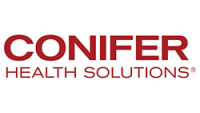How predictive analytics and AI shed light on payer behavior
Providers and payers have become more collaborative as payment models evolve toward value. Still, payer-provider relationships can seem one-sided — decidedly in favor of the payer — as hospitals continue to face declining reimbursement and rising costs. The increase in denials is a great example, with rates skyrocketing by 20% over 5 years, according to a survey of reimbursement executives. In 2022, an estimated 11% of all claims were denied.
One of the primary causes of increasing denials is that payers are using more sophisticated algorithms and technologies to identify potential claim issues. At the same time, they are applying more complex criteria to claims submission and medical necessity. Hospitals need equally sophisticated technologies to better understand payer behaviors that impact the revenue cycle.
Predictive analytics and artificial intelligence (AI) are a great place to begin.
Leveraging predictive analytics and AI in a new way
Discussions around predictive analytics and AI in healthcare are often centered on tech-enabled modeling to identify patient needs and behaviors with the aim of improving quality, enhancing care management, and optimizing population health initiatives. Modeling is also used to improve the patient’s understanding of their financial responsibility and to enable collections at the time of service. However, the benefits extend far beyond patient access. More forward-thinking hospitals now use similar data models to assess a payer’s propensity to pay or deny claims.
The vice president of accounts receivable for a national health solutions group says they have leveraged predictive analytics and AI to model health plan behavior for more than six years.
“We apply what we’ve learned from the models to predict, with regular accuracy, whether a payer will dispute, deny or pay a claim and in what timeframe.”
Better use of resources
Understanding payer reimbursement patterns around a variety of claim types allows organizations to leverage their revenue cycle workforce more strategically. This is especially valuable for organizations with limited resources.
For example, suppose it is known that a particular payer isn’t likely to remit payment for care delivery until day 14 (regardless of the claim type or when it was submitted). In that case, the team won’t be prompted to work an account until day 15 or 16. Organizations can use these types of insights to redirect the workforce to resolving more complicated accounts or performing tasks that require more critical thinking.
It is important for hospitals to understand that implementing predictive analytics, or any emerging technologies like artificial intelligence and robotic process automation, does not necessarily coincide with workforce reductions. In fact, the primary value of tech-enabled tools in the hospital revenue cycle is in their ability to improve process efficiencies and elevate staff productivity.
According to the 2022 CAQH Index, revenue cycle automation presents a $22.3B saving opportunity.
Getting staff on board
The effective application of predictive models often highlights the need to reimagine traditional revenue cycle processes. This can upset staff who are uncomfortable with change. So, it is important to emphasize that the use of predictive analytics, AI and other automation technologies actually benefits them by freeing them from tedious tasks that require little skill, thereby reducing manual processes and enabling them to focus on more strategic processes.
Communicating these realities to the staff is essential to generate buy-in. Getting frontline staff involved in workflow development and including them in the implementation process will go a long way in generating trust and achieving optimal utilization of predictive analytics investments. Doing so will also help ensure team members are adequately informed of the technology’s capabilities and will allow them to voice any concerns so they can be proactively addressed.
Obtaining the most value from the data
While predictive analytics play a vital role in improving revenue cycle performance, simply integrating the technology will not in and of itself guarantee optimal results. It is essential that leaders be mindful of the implications that come with their new-found insights by considering all the ways they could leverage the data to achieve the highest return on their investment. In other words, the value of the data is only as good as an organization’s ability to turn it into business intelligence that can be used to improve revenue-generating operations. One key consideration is the talent and resources needed to make that possible.
For many organizations, the lack of expertise and resources required to build and maintain the necessary infrastructure to support predictive analytics and AI presents a significant barrier. Smaller organizations with limited resources can find it particularly challenging. And while large health systems may be able to tap into their own data to form predictive models, this undertaking still requires considerable investments of time and funds. Not every organization has the money to hire an expensive, full-time team of data scientists to build standardized data models across the enterprise.
To address these challenges, many organizations choose to partner with technology companies that have already invested in the latest technologies and have curated a team of highly skilled experts. By leveraging these companies, hospitals can achieve better payer insight quickly and with less effort. This allows them to achieve their strategic revenue cycle goals without adding additional stress and responsibilities to already overworked staff.
The bottom line
Hospitals are finally beginning to see margins improve, but they still have a long way to go to achieve post-pandemic financial stability.
Predictive analytics, coupled with business and artificial intelligence, can help along this journey by allowing hospitals to gain better insight into payer behavior. This, in turn, enables them to deploy scarce revenue cycle resources more effectively.
Getting employee buy-in and partnering with industry experts can help ensure they achieve the maximum value from these efforts.






